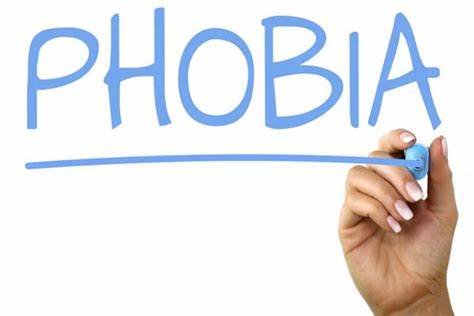The concept of implicit bias has taken center stage in discussions about discrimination, prejudice, and the overarching quest for social justice. This term, which denotes the automatic and unconscious stereotypes that influence our perceptions and actions, is not just a buzzword but a scientifically substantiated phenomenon with profound implications on both individual and societal levels. As explored in a recent Scientific American article by Keith Payne, Laura Niemi, and John M. Doris, understanding implicit bias is crucial for addressing the subtle yet pervasive forms of discrimination that persist in our world.
Implicit bias, as the authors articulate, stems from our brain’s tendency to categorize the world, a function that aids in processing complex information efficiently. While beneficial for learning and decision-making, this mechanism also predisposes us to overgeneralize, leading to stereotypes that can influence our behavior toward others, often without our conscious awareness. Recognizing that such biases are a common aspect of human cognition underscores the need for introspection and awareness rather than self-condemnation. These biases manifest in numerous settings, affecting decisions in employment, healthcare, and law enforcement, often in ways that perpetuate inequality and injustice.
Understanding implicit bias does not entail predicting individual behavior simplistically; instead, it involves recognizing patterns of thought and action that, on a collective level, shape societal outcomes. This distinction is crucial. While individual IAT scores may not predict specific acts of discrimination, the aggregated data can reveal trends that correlate with disparities in health, policing, and employment opportunities. Acknowledging these patterns is a step toward addressing the systemic injustices that these biases can perpetuate.
Methodological Limitations and Generalizations
The methodological limitations and generalizations inherent in much of the research on implicit bias also warrant careful consideration. Focusing predominantly on racial biases, particularly between black and white individuals, may not fully encapsulate the broad spectrum of prejudices that affect society. Such a narrow scope risks missing the intricate ways in which biases intersect with factors like gender, sexuality, age, and disability, potentially overlooking significant cultural and societal nuances.
The reliance on tools like the Implicit Association Test (IAT) has sparked a debate about the efficacy and accuracy of such measures in truly capturing the nuances of implicit bias. Questions regarding the IAT’s stability and predictive validity point to a broader issue: the potential for oversimplification of complex psychological phenomena. This critique emphasizes the necessity for a diverse methodological approach beyond a single test to understand the multifaceted nature of implicit biases.
Moreover, the current conversation around implicit bias might inadvertently overshadow the persistent issue of explicit, conscious biases. Focusing primarily on unconscious prejudices risks underestimating the impact of deliberate discrimination, thus potentially allowing overt forms of prejudice to persist unchallenged under the guise of addressing “hidden” biases.
Underestimation of Conscious Bias
Focusing predominantly on implicit bias might inadvertently underplay the role and prevalence of explicit, conscious biases in perpetuating discrimination and inequality. While it’s uncomfortable to confront, the reality is that many discriminatory actions and attitudes are not solely the byproduct of unconscious bias but also involve deliberate prejudice. The dialogue around implicit bias should not excuse or overshadow the need to confront and address overt racism and bigotry.
Potential for Misapplication
There’s a concern that discussions about implicit bias might lead to misapplications, especially in their translation from academic research to popular media and policy. For instance, mandatory implicit bias training, often adopted by organizations as a quick fix, has been shown to have limited effectiveness in changing behaviors and can even backfire. A more nuanced critique would demand careful consideration of how implicit bias awareness is translated into action, ensuring that efforts to combat bias are evidence-based and contextually appropriate.
Overshadowing Structural Inequities
Implicit bias is inherently an individual-level analysis of discrimination. There’s a risk that focusing on individual implicit or explicit biases may detract from addressing the systemic and structural inequities that underpin much of the discrimination and disparity observed in society. Solutions to change individual biases may only be sufficient if the underlying systemic injustices are addressed.
Path Forward
Addressing implicit bias requires a nuanced understanding that transcends individual-level analysis and incorporates systemic and structural considerations. While implicit bias training and awareness campaigns represent steps toward recognition, their effectiveness remains debated. Critics argue that without a concurrent effort to tackle the systemic roots of discrimination, such initiatives might serve as mere palliatives rather than solutions.
Implicit bias, therefore, must be understood as part of a larger ecosystem of discriminatory practices and structural inequities. Solutions must be multifaceted, embracing empirical research, individual accountability, and systemic change. This approach acknowledges the complexity of human cognition and social systems, advocating for a path forward informed by a critical awareness of the limitations and potential of current methodologies and interventions.
In conclusion, the dialogue surrounding implicit bias is vital to the broader quest for social justice. However, it demands a careful, critical approach that respects the complexity of human behavior and societal structures. Only through a comprehensive, multidimensional strategy that addresses both individual biases and systemic injustices can we hope to make meaningful progress toward equity and inclusion.
Max E. Guttman is the owner of Mindful Living LCSW, PLLC, a private mental health practice in Yonkers, New York.
- Max E. Guttmanhttps://mentalhealthaffairs.blog/author/max-e-guttman/
- Max E. Guttmanhttps://mentalhealthaffairs.blog/author/max-e-guttman/
- Max E. Guttmanhttps://mentalhealthaffairs.blog/author/max-e-guttman/
- Max E. Guttmanhttps://mentalhealthaffairs.blog/author/max-e-guttman/






